Der Blog des Nibelungen
Observations on Los Angeles Opera's production of Wagner's Ring Cycle
— by Rich Capparela (and Wagner friends and foes everywhere)

Der Blog des Nibelungen
Commentary and observations on Los Angeles Opera's production of Wagner's Ring Cycle
— by Rich Capparela (and Wagner friends and foes everywhere)
1. Prologue — 4/15/2010
 I suppose it was inevitable. April 15th - Tax Day - marked the official opening of Ring Festival L.A.. After all, it's all about the gold, isn't it? Last night at the Los Angeles County Museum of Art, Los Angeles Opera kicked off the festival with speeches, ceremonial brass fanfare, Rhinemaidens singing one of their two greatest hits, performances by the Verdi Chorus, bratwurst and French (?!) Fries. Partners in the festival, approaching some 115 organizations, were on hand to help with the launch. When the Ring's designer Achim Freyer was introduced to the crowd the reception was by far more uniformly favorable than what one heard in the Dorothy Chandler Pavilion at the premiere of Goetterdaemerung just over a week ago. In this crowd Achim Freyer is a rock star. His production of L.A. Opera's Der Ring des Nibelungen (The Ring of the Nibelung) has created just a bit of buzz. In fact, there hasn't been this much excitement in the So Cal arts scene since the arrival of Gustavo Dudamel to the podium of the Los Angeles Philharmonic. And that was some buzz.
I suppose it was inevitable. April 15th - Tax Day - marked the official opening of Ring Festival L.A.. After all, it's all about the gold, isn't it? Last night at the Los Angeles County Museum of Art, Los Angeles Opera kicked off the festival with speeches, ceremonial brass fanfare, Rhinemaidens singing one of their two greatest hits, performances by the Verdi Chorus, bratwurst and French (?!) Fries. Partners in the festival, approaching some 115 organizations, were on hand to help with the launch. When the Ring's designer Achim Freyer was introduced to the crowd the reception was by far more uniformly favorable than what one heard in the Dorothy Chandler Pavilion at the premiere of Goetterdaemerung just over a week ago. In this crowd Achim Freyer is a rock star. His production of L.A. Opera's Der Ring des Nibelungen (The Ring of the Nibelung) has created just a bit of buzz. In fact, there hasn't been this much excitement in the So Cal arts scene since the arrival of Gustavo Dudamel to the podium of the Los Angeles Philharmonic. And that was some buzz.
And because Los Angeles's first ever Ring is, to paraphrase a high-ranking administration official, "A big deal," I think we should have a place to discuss it. That is the reason for this space - Der Blog des Nibelungen (I Googled it this morning and found "0" instances of that particular text string. Really? I was the first to think of it? Okay).
In the days and weeks to come I hope to provide you with a place to vent, to question, to argue. Even with a non-controversial production, Wagner's epic 16-hour saga provides plenty of food for thought. When it's a production like Freyer's, well, let the fireworks begin. Having seen all four of these productions twice each, I feel some comfort level with the director's concept. And while it's not the way I'd ever envisioned the Ring, I have come to hold this director's take on the story in very high regard. And, for purely selfish reasons, I want to do what I can to help fill the hall for the upcoming three full Ring presentations. I want this Ring to be such a success that it comes back. It's that good.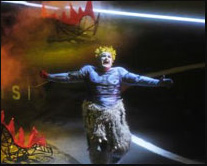
So starting with this post, I will put in my two cents and offer you your very own soap box. What do you think of what you've seen (or what you've heard from your friends or the press)? In the next installment I'll offer you my Ring bona fides, starting back in the 60s when your humble scribe first made the acquaintance of one Mr. Wagner - and was never quite the same after. After that I'll periodically start giving you my thoughts on this Ring. And I fully expect (and welcome) disagreement.
Meantime, there are a couple of places you need to know about. For instance, the official web site for the dazzling series of events that is Ring Festival L.A. Then of course there's the Ring page at Los Angeles Opera.
In summary: do not be afraid. Sure it's a commitment of time, but this Ring is about as fleet as any in history. With supertitles, mercifully flexible ticketing and some of the best dang Wagnerian singing on the planet, it is not to be missed. It's a cultural happening and it is guaranteed to lead to some very spirited discussion.
Hojotoho,
- Rich Capparela
2. Comments on Comments — 4/20/2010
Wow. I'd planned on making my second installment on this blog the story of my Ring experience, but the comments posted thus far deserve some response. First, my name in the Schenectady phone book was indeed spelled W-A-G-N-E-R. My first name was spelled G-U-S-T-A-V. I'd called the phone company and asked for my number to be unlisted. When informed that I would have to pay for that privilege, I told the agent that my name was spelled differently than it sounded - that what sounded Rich Capparela was actually spelled Gustav Wagner (my two favorite composers at the time, Mahler and Wagner, both getting in on the act). While it didn't prevent unsolicited calls, it sure made for interesting conversations when I'd receive calls for Mrs. Wagner. Oh the fun I had with those hapless telemarketers. It usually went something like this: "Oh no. She's not available to talk. She's dead. No. Wait a moment." (LOUD, SICKENING THUD) "Okay, she's dead now. What can I do for you?"
Then there's the matter of Wagner not including the traditional duets, quartets and so on. That was part of his philosophy. He called it Gesamtkunstwerk ("Total Art") in an essay titled "Art and Revolution." Heck, Wagner didn't even like to call his operas operas. To him they were Music Dramas. In the Ring one must wait nearly 14 hours before one even gets to hear a chorus - and even then it's only male voices. Wagner was trying something different. This wasn't about beautiful singing. This was about telling a story.
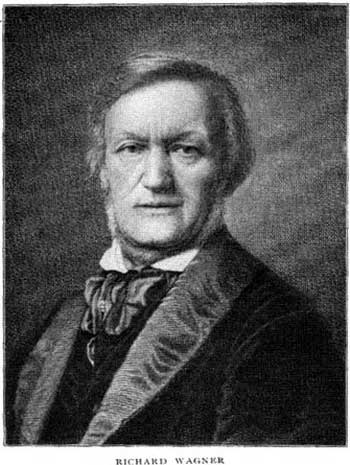 As for themes in the Ring, indeed just about every person, place or thing has its own motive. But more than that, emotions and events have musical equivalents as well. Why does that matter? It matters because Wagner tells the story with both the text being sung and with the motives. Sometimes the two do not agree, so we know something the other character being sung to does not. Or we may know something the person singing doesn't realize. And there are moments where not a word needs to be sung to propel the narrative. One such moment happens at the start of the third act of Siegfried, where a frustrated Wotan, in the guise of the character known as the Wanderer, rides his horse to visit the earth goddess Erda to ask her what he can do stop fate from unfolding. But in the three minutes before his arrival, the introductory music includes a theme for riding a horse, nature's theme, Wotan's frustration, the twilight of the gods, the Wanderer theme, the power of the ring and the theme associated with Wotan's spear on which his rules for governance are carved. So what, you may ask. Well here's what's so mind-blowing about all of that: it pretty much happens simultaneously. To anyone who has taken the time to learn the significance of these melodies, the effect is emotionally and dramatically overwhelming. The listener knows what's happening before a word is sung.
As for themes in the Ring, indeed just about every person, place or thing has its own motive. But more than that, emotions and events have musical equivalents as well. Why does that matter? It matters because Wagner tells the story with both the text being sung and with the motives. Sometimes the two do not agree, so we know something the other character being sung to does not. Or we may know something the person singing doesn't realize. And there are moments where not a word needs to be sung to propel the narrative. One such moment happens at the start of the third act of Siegfried, where a frustrated Wotan, in the guise of the character known as the Wanderer, rides his horse to visit the earth goddess Erda to ask her what he can do stop fate from unfolding. But in the three minutes before his arrival, the introductory music includes a theme for riding a horse, nature's theme, Wotan's frustration, the twilight of the gods, the Wanderer theme, the power of the ring and the theme associated with Wotan's spear on which his rules for governance are carved. So what, you may ask. Well here's what's so mind-blowing about all of that: it pretty much happens simultaneously. To anyone who has taken the time to learn the significance of these melodies, the effect is emotionally and dramatically overwhelming. The listener knows what's happening before a word is sung.
Why three full Rings? When it comes to an opera company (and its host city) the Ring is a combination of art and commerce. Not only does it represent an artistic rite of passage for the company, it also offers the city the chance to welcome well-heeled visitors from around the globe, and these people will book a room, buy dinner, rent a car, etc. There is a sizable number of people who's discretionary spending consists of nothing more and nothing less than flying around the globe to hear the Ring wherever it's being performed. Some of the more fanatical among them bring their own Bruennhilde horned helmets (for use during intermission only, thank God) or the occasional breastplate or even a Tarnhelm. If this Ring were to turn out to be a success (in spite of its happening during the worst economy in living memory) it could lead to a return of the Ring sooner than later. It might even be a different production. But if a city as small as Seattle can mount a Ring festival every summer, it's not unreasonable to imagine that happening in Los Angeles some day as well.
Finally there's the the matter of Wagner the person. I doubt you could find anyone willing to defend a man who was not only rabidly anti-semitic, but also an adulterer, serial moocher, bad credit risk, abuser of friends and patrons alike, self-absorbed egomaniac and all 'round jerk. Wagner the man is indefensible. A total train wreck. Wagner the creator on the other hand, is brilliant. Had I come in contact with a Wagner biography before having heard his music, I doubt that I would have bothered listening. I understand why people can't get past Wagner the despicable person. I also understand why so many are willing to try to separate that unpleasantness from the music he wrote. You won't find any simple answers here. Besides, gray is ever so much more fascinating than black and white.
- Rich Capparela
3. Talking Back (After the World has Ended) — 4/26/2010
A few hours after seeing the second Los Angeles Opera performance of Twilight of the Gods, I found myself in a phone conversation with a gentleman named Carl Selkin who'd been in the Dorothy Chandler Pavilion that day as well. He noted "The pre-opera talks are fine, but what they should really have for the patrons are post-opera discussions. People come away from these productions with a whole lot on their minds. A chance to talk through it with others would be a real service." I agreed. In fact, I mentioned it to a couple of people with Los Angeles Opera. And a few days ago the opera company wrote to me to say "You're on." I'm what?
So, feeling like the dog that catches the car, I found myself in a kind of "Now What?" World. This past Sunday afternoon was the final stand-alone performance of Twilight of the Gods prior to the three complete Rings. It was followed by the first ever Talk Back, hosted by yours truly. The setting was the same second-level space where the pre-opera events take place, and I was given the use of a wireless microphone and a pair of staffers who would pass around two other mics to those needing to speak their piece. As the moments ticked down to the start of the event it all 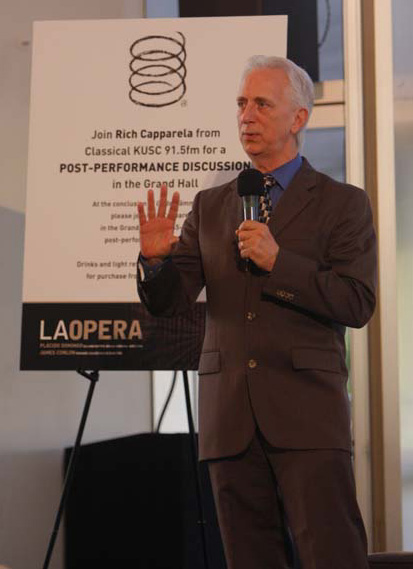 felt very much like inventing the wheel. Would anyone come? Would there be angry yelling? Insightful questions? Provocative comments? Would there be no questions at all - just me vamping to an increasingly empty space for ten awkward minutes until we gave up and went home, older but wiser? No one could know what was about to unfold.
felt very much like inventing the wheel. Would anyone come? Would there be angry yelling? Insightful questions? Provocative comments? Would there be no questions at all - just me vamping to an increasingly empty space for ten awkward minutes until we gave up and went home, older but wiser? No one could know what was about to unfold.
 The answer came soon enough. We began moments after the applause died down, just shy of 6:30 and we ended some forty minutes later. My security blanket consisted of printouts of comments from the KUSC Ring blog and David Ng's piece titled Horns Locked Over Horns' Disposal from that day's edition of the Los Angeles Times. For starters, the crowd was, I dunno, three? four? times larger then I'd dare imagined. Two hundred or so? Big, that's for sure. But it was the quality of discourse that impressed. People did indeed need to talk. Some were disappointed at Achim Freyers' visuals. Others were entranced by them. And everyone was passionate. It was an honor to witness one heartfelt comment be followed by a polar opposite point of view - equally articulately expressed.
The answer came soon enough. We began moments after the applause died down, just shy of 6:30 and we ended some forty minutes later. My security blanket consisted of printouts of comments from the KUSC Ring blog and David Ng's piece titled Horns Locked Over Horns' Disposal from that day's edition of the Los Angeles Times. For starters, the crowd was, I dunno, three? four? times larger then I'd dare imagined. Two hundred or so? Big, that's for sure. But it was the quality of discourse that impressed. People did indeed need to talk. Some were disappointed at Achim Freyers' visuals. Others were entranced by them. And everyone was passionate. It was an honor to witness one heartfelt comment be followed by a polar opposite point of view - equally articulately expressed.
The Ring Cycle experience of the crowd ranged from first timers to those who have spent decades traveling the world to hear Wagner's epic. Here's one quick example of the kind of insights that were being tossed around: One woman, describing the very last stage images, noted that, with a certain clever use of 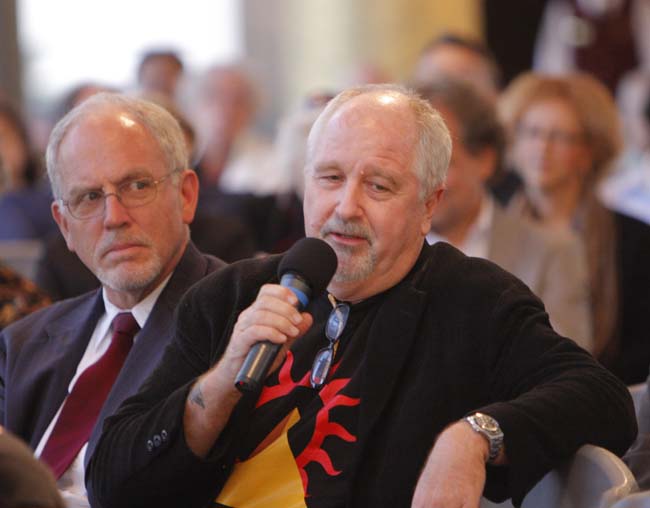 lighting, the director created the illusion that, not only was the Rhine river overflowing its banks, drowning all those on stage - but we in the hall were being submerged as well. The entire world was ending - ours as well as Freyers'. That comment got a nice round of applause; as did the remark by the fellow who said that, because this was L. A.'s first Ring, it should have been more conventional, more accessible to a broader audience. In other words, the opinions were all over the map.
lighting, the director created the illusion that, not only was the Rhine river overflowing its banks, drowning all those on stage - but we in the hall were being submerged as well. The entire world was ending - ours as well as Freyers'. That comment got a nice round of applause; as did the remark by the fellow who said that, because this was L. A.'s first Ring, it should have been more conventional, more accessible to a broader audience. In other words, the opinions were all over the map.
For me, it was like hosting the best cocktail party ever: surrounded by like-minded people with whom one might agree or disagree - but everyone remaining civil, intelligent, engaged. The end of the world has never been so much fun.
The final verdict: I have been invited to host three more Talk Back sessions during the Ring itself, following each performance of Siegfried (Thursday June 3, Sunday June 13 and Wednesday June 23). My reply? Hella yes.
- Rich Capparela
(Photos by Robert Millard)
4. Boy Meets Dragon — 4/30/2010
This is my very own Ring saga. It starts way back in 1968 when a slacker teen from a Catskill mountain town of 300 meets a great teacher, and the ground moves.
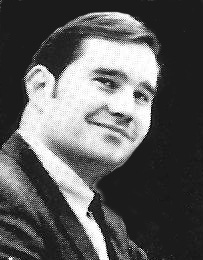 |
Robert Carr —1968 |
I attended high school not far from Woodstock, New York (yes, that Woodstock). It was the height of the ’60s, and like pretty much everyone else, I was a rocker. Then I took English teacher Bob Carr’s arts-focused humanities class. Carr, an acerbic, brilliant man, showed us the threads that connect architecture, painting, poetry, prose, music. He tantalized us with snippets of Vaughan-Williams, Stravinsky, Holst and Berlioz. At the same time off campus I was busy discovering Frank Zappa, who seemed quite comfortable quoting Stravinsky and Holst without apology. Maybe this classical music could be cool after all. Still, it being the ’60s and all, I was hardly about to be smoothly finessed into liking classical music. I would have to be bludgeoned into submission.
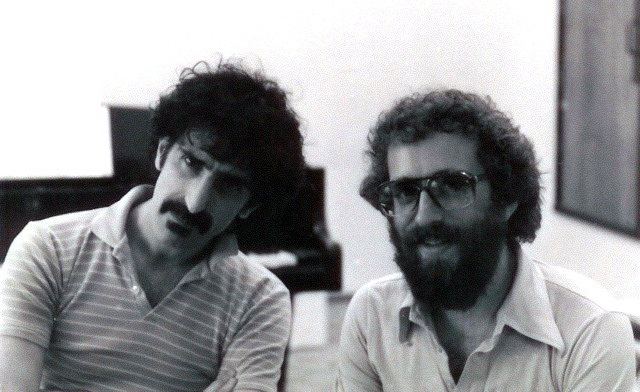 |
Frank Zappa and the Author — 1980 |
And then Bob Carr devoted a full week to Wagner’s Ring. By the end of that week I was hooked on the story of an evil golden ring, a magic sword, and a young man’s heroism, knack for dragon-slaying, and his ability to wake the lady from deep sleep with a kiss. Carr announced that, in case any of us were interested, the audio tapes of the entire Ring (along with a reel-to-reel player and headphones) would be available to us in the English faculty room during free time. When I mentioned this to chorus teacher Earl Proper, he noted, “Well, you know I sang Wotan in college. I have the librettos for the entire Ring if you’d like to borrow them.” Not exactly certain what a libretto was but wanting to get closer to the dragon slayer by any means possible, I borrowed those libretti, and over the course of several months I worked my way through Wagner’s 16-hour saga, 45 minutes at a time.
And in my mind I was Siegfried.
As the end of the school year neared I was still only at the beginning of Twilight of the Gods, the final opera, and I was in serious danger of losing my familiar cross-legged-on-the-floor listening opportunity. And then one day something clicked. As my free period ended I realized I could not stop listening. I had to see this through to the end. And so I skipped the next class. And the class after. And the class after that. I missed the bus. And the late bus. The distance from school to my house was 22 miles.
 |
Author and Acquaintance — undated |
As the last notes of Wagner’s Ring -- the melody depicting redemption through love -- dissolved into silence, everything shifted, and my life irrevocably changed. Suddenly I saw my place in the vast cosmos. My priorities were settled instantly. As the tears began to subside I knew what I must do with the rest of my life: I must stay as close to this music as possible. I became one of those people who are lucky enough to experience a life-changing moment of clarity, of certainty.
And I picked myself up and walked from school to the home of -- good guess -- Robert Carr. His wife, Gail, answered the door, took one look at me, turned away, and yelled, “Robert! I think Capparela’s finished the Ring.” And so started a lifelong friendship. Today my wife Marcia and I are godparents to the Carrs’ eldest granddaughter.
Uncle George from North Carolina asked me about my interest in the Ring and how much it would cost for me to own the entire Georg Solti-conducted recording. “A king’s ransom,” I replied. He insisted on lending me the money for it, and I drove the three hours to Manhattan. No record store I visited had the entire Ring in stock, and so I bought the nineteen LPs of those four operas in three different stores. But I now possessed the Ring. My third check of $5 to Uncle George was returned. I called him to ask what was wrong with it. “Nothing,” he said. “You’re done paying me back. Enjoy your Ring.”
Right out of school my passion for music grew, but my employment prospects were slim. I found myself working on an assembly line at Vista Op, a company that manufactured eyeglass frames. Eight hours a day of stamping gold-colored metal pieces. Forced drudgery. Fruitless toil.
And in my mind I was a beleaguered dwarf named Mime.
In order to keep my sanity I would go home at night and play one LP side of the Ring over and over until I had it memorized. Then, the next day at the factory, I would try to recreate that section in my mind. And so it went, for seven months. On the morning I finished doing this with the very last side, I dutifully labored on the factory line for a couple more hours, then calmly pushed away from the machine, picked up my lunch box, and walked out of the building, never to return. That was it.
WMHT-FM Schenectady, NY — 1972 |
One day not longer after, I was standing on a corner in Woodstock when a family friend happened by. He asked what I was doing. “Hanging out in Woodstock.” “Well, what would you like to be doing?” he asked. And it was as I replied that a half-baked plan was hatched: If I could become a classical radio announcer, then I could get paid to listen to music. He dared me to try, and not being otherwise engaged I took the bait. I got my 3rd class broadcast operator’s permit and started hunting for radio work. In April 1972 an employment counselor, noting that the 70-degree weather would have a negative impact on my ability to continue working as a ski lift attendant, asked me the same fateful question. My ultimate wish was the same. The rest, as they say, is dumb luck.
Over the ensuing years I was able to see the Ring in Seattle, at the Met in New York, and in bits and pieces throughout Europe, including a late-1970s performance of Siegfried that featured a waking Birgit Nilsson. I’ve been backstage at Wagner’s legendary custom-built theater — the Bayreuth Festspiel Haus — and petted the Patrice Chereau production’s dragon. Then I took a decade or two off from the Ring, not absorbing another full cycle until 2006 when the Kirov Opera and Valery Gergiev came to the Orange County Performing Arts Center. In the years that had passed since first hearing the Ring, I’d been married, divorced, and married again; seen my career start and sputter; witnessed death in small and large ways; and had learned that fate was not mine to control. I’d come to know, as we all do, that the more you experience life, the more you realize how powerless you really are.
And in the darkness of Segerstrom Hall in October 2006, in my mind I was an aged Wotan.
And that is the power of great art, isn’t it? It doesn’t change, but we do. And as we change we experience the art anew. It provides context to our lives. It provides continuity. It offers assuredness in a most unsure world. The very best of great art reminds us of who we are now and that once upon a time, long, long ago, we were the young Siegfried.
- Rich Capparela
5. More Comments on Comments — 5/7/2010
The level of intelligence in the discourse I've been reading on the KUSC-FM blog site matches the intensity and depth I encountered at the first-ever Talk Back at the conclusion of Twilight of the Gods on April 25th. Here are four observations on what people have been expressing.
1. The Achim Freyer production of Wagner's Ring is about as polarizing as American politics (only with fully functional brains). Ring Festival organizer Barry Sanders wrote on Huffington Post that the Talk Back included one man who "...disliked the production yet went on to praise its "unforgettable images" and commented that 'people will be talking about it for years to come.'" I remember one complaint that the production was a huge disappointment because it was a director's indulgent, unfaithful adaptation of the story. In other words, Regie Opera. On the other hand, blog commenter Ray noted:
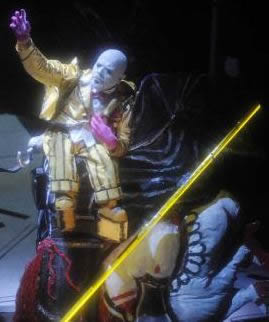 "I am 50, and I am not a friend of “Regietheater” either... But Achim Freyer doesn’t do “Regietheater” at all. Just the opposite: he is more true to the original (story, libretto and music) than any other stage interpretation I have ever seen of the Ring...Take, for example, the costume for Hagen. It shows us so many things, like the fact that he is a “product” of Alberich: he is literally being carried by his father, who himself “sits on” the woman he got pregnant for this purpose. And we recognize this woman as one of the characters from the procession of “greed, lust and power” that has been presented to us several times in conjunction with Alberich throughout all four operas....he explains to us (in his artistic way) complex connections between the characters. And it’s so much fun to figure all this out!"
"I am 50, and I am not a friend of “Regietheater” either... But Achim Freyer doesn’t do “Regietheater” at all. Just the opposite: he is more true to the original (story, libretto and music) than any other stage interpretation I have ever seen of the Ring...Take, for example, the costume for Hagen. It shows us so many things, like the fact that he is a “product” of Alberich: he is literally being carried by his father, who himself “sits on” the woman he got pregnant for this purpose. And we recognize this woman as one of the characters from the procession of “greed, lust and power” that has been presented to us several times in conjunction with Alberich throughout all four operas....he explains to us (in his artistic way) complex connections between the characters. And it’s so much fun to figure all this out!"
 2. People need to talk it through. The size of the crowd at the Talk Back was remarkable, especially when one considers that folks had just been sitting for 5 1/2 hours. But equally surprising was that the questions and comment kept on coming. Nearly three quarters of an hour after the session started, the house staff signaled me that it was time to say good bye. Now, please. We could have continued for another half hour. Like it or hate it, this production provokes a response. Just these blogs have sparked vigorous debate unlike anything we've seen on the KUSC blog pages.
2. People need to talk it through. The size of the crowd at the Talk Back was remarkable, especially when one considers that folks had just been sitting for 5 1/2 hours. But equally surprising was that the questions and comment kept on coming. Nearly three quarters of an hour after the session started, the house staff signaled me that it was time to say good bye. Now, please. We could have continued for another half hour. Like it or hate it, this production provokes a response. Just these blogs have sparked vigorous debate unlike anything we've seen on the KUSC blog pages.
3. Opera-goers are grateful to have a place to vent. During the Talk Back one attendee spoke rapturously of the Robert Wilson production of Parsifal. To that I admitted that, at the end of that production, I booed, loudly. Blog commenter Marta wrote "I truly appreciated Talk Back and found some of the ideas/observations shared more insightful than I had expected. The discussion was energizing. ...BTW – as much as I love Robert Wilson’s Madame Butterfly is how much I disliked his Parsifal. I should have booed….."
4. Los Angeles Opera has gotten the opera world's attention. The May 2010 issue of Opera Magazine features a major piece on Achim Freyer's production. And in just a few weeks opera lovers from around the world will be descending on Los Angeles to see and hear what all the fuss is about. I'll doing Talk Back sessions at the conclusion of all three performances of Siegfried. At the start of the first one my opening question for the folks who choose to join us (at 10:45 PM!) will be "Anybody here from out of town?"
- Rich Capparela
6. "That's one giant rake for a man. One small misstep could be unkind." — 5/15/2010
Neil Armstrong. That was the first name that came to mind as I read the Friday edition of the Los Angeles Times. In a front page piece by David Ng, two of the production's lead singers, John Treleaven and Linda Watson (Siegfried and Brunnhilde, respectively), expressed their displeasure with director Achim Freyer's staging: the steep rake of the stage, the heavy costumes, the masks. And, alas, with the whole of Freyer's enterprise, it seems.
Why did Neil Armstrong come to mind, you ask? As I read the story I felt the same sort of conflict I did upon hearing of Armstrong's criticism of the current administration's plans for the manned space program. My conflict arose from being sympathetic to both points of view: Armstrong is a genuine hero and has what one might describe as "an investment" in sending humans into space - he's the poster boy - the first human to walk on the moon. Meantime, a new President of these United States, faced with an economy that can described with some accuracy as dreadful, is trying to re-prioritize NASA's mission and NASA's budget. Robotic missions aren't as sexy as putting brave humans atop large rockets, but it sure is cheaper. As a space buff I'll miss all of those blastoffs and the prospect of humans on mars in my lifetime. On the other hand, I'd like to figure out how to make oil drilling a safer bet than the slots in Laughlin. Or, hey, how about an alternative to oil altogether?
Neil Armstrong is the face of this country's greatest technological achievement. He is a superstar. A great man. But that doesn't necessarily make him best suited to make decisions on the future of the space program. His perspective is too tied to his own role. Those kind of decisions are best left to people wearing jackets and ties, not pressurized suits.
And now we return to Los Angeles Opera's Ring Cycle, Achim Freyer and unhappy singers.
Safety first. The issue of safety is of paramount importance and, having been at the performance of Siegfried when John Treleaven slipped on stage during the third act and was visibly limping by the end of the opera, I understand his justifiable concerns about serious injury. This production is indeed built upon a steeply angled platform, albeit a platform now equipped with small singing stations that enable the cast to deliver their lines much of the time without coming down with vertigo (or worse).
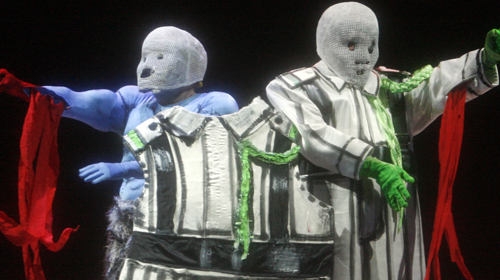 Costumes & Masks. Yes the costumes look to be pretty heavy. But they are a vital part of the production. Those costumes - sometimes grotesque and hypersexual - do move the story forward. They are essential to the narrative. Then there are the masks. I've tried closing my eyes when I knew I'd a character would be donning or removing a head piece (Siegfried disguising himself as Gunther). Surprise! Couldn't hear a difference. So there may be issues with the masks for the singers, but as a listener, it's not a problem. (And for those who miss being able to discern subtle changes in facial expressions, my reply is this: not everyone gets to sit in the first five rows. For the rest of us, those characters on stage are just that: characters. We're too far away to pick up a subtle raising of the eyebrow or a fleeting smile).
Costumes & Masks. Yes the costumes look to be pretty heavy. But they are a vital part of the production. Those costumes - sometimes grotesque and hypersexual - do move the story forward. They are essential to the narrative. Then there are the masks. I've tried closing my eyes when I knew I'd a character would be donning or removing a head piece (Siegfried disguising himself as Gunther). Surprise! Couldn't hear a difference. So there may be issues with the masks for the singers, but as a listener, it's not a problem. (And for those who miss being able to discern subtle changes in facial expressions, my reply is this: not everyone gets to sit in the first five rows. For the rest of us, those characters on stage are just that: characters. We're too far away to pick up a subtle raising of the eyebrow or a fleeting smile).
Who's production is this, anyway? My point in all of this is simple: I'd like to separate the issue of singer safety from that of singer convenience and singer taste. We should give plenty of respect to both the singers who, when it comes to Wagner, have to be about as heroic as a Neil Armstrong, and the director who's job is to create something from nothing - also an heroic undertaking. But a singer's perspective is affected by their place in the production, and that's the way it should be. The singers' views are, understandably, singer-centric. They are stars. They are the face of the production. But are they the best people to judge a given production's value? I think not. The director is hired to give a look to the music we are hearing. A production's success or failure is for us, the audience, to decide. The Times article quotes Treleaven as saying "The character development that I bring to the part is almost expunged by this clown-like makeup." It's safe to say that many audience members understood this singer's character development just fine, makeup or not. I'll leave it for someone else to argue that the clown-like makeup actually enhances the role of Siegfried. And this sort of issue of perspective exists in every field. Heck, if radio DJs were to make all of the decisions, there'd be a ratio of 90% talk /10% music (the music being aired merely to facilitate pee breaks). We do like the sound of our own voice, you know.
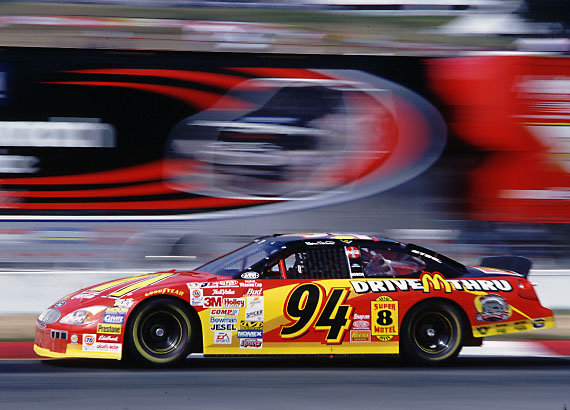 Controversy sells. If Los Angeles Opera can take one ray of hope from Watson's and Treleaven's comments it is this: if you want to get people to shell out good money for the privilege of sitting in the dark for 5 hours, one way to get them into that seat is the promise of controversy. After all, who doesn't like a little drama with their drama, right? Or maybe just a whiff of danger. Perhaps Los Angeles Opera's Ring has inadvertently stumbled upon the long-sought after answer to the question: Just how do you get those NASCAR fans into the opera house?
Controversy sells. If Los Angeles Opera can take one ray of hope from Watson's and Treleaven's comments it is this: if you want to get people to shell out good money for the privilege of sitting in the dark for 5 hours, one way to get them into that seat is the promise of controversy. After all, who doesn't like a little drama with their drama, right? Or maybe just a whiff of danger. Perhaps Los Angeles Opera's Ring has inadvertently stumbled upon the long-sought after answer to the question: Just how do you get those NASCAR fans into the opera house?
- Rich Capparela
7. Everybody Back in the Water — 5/30/2010
Last evening shortly after 7:30, a few thousand people found themselves in the depths of the river Rhine. Two and a half hours later that same crowd entered the lofty fortress of the gods, Valhalla. Los Angeles Opera's Ring has arrived, resplendent. It is some measure of the audience's eagerness, sophistication and unity of opinion that not a single boo could be heard at the end — only a Wagnerian-length round of applause and a standing ovation.
the lofty fortress of the gods, Valhalla. Los Angeles Opera's Ring has arrived, resplendent. It is some measure of the audience's eagerness, sophistication and unity of opinion that not a single boo could be heard at the end — only a Wagnerian-length round of applause and a standing ovation.
Well that was easy, wasn't it?
More than a decade in the making, with many dollars and the occasional controversy spilled along the way, the Land of the Plastic Lotus can take no small amount of pride in having had its opera company pull off the granddaddy of them all.
On hand at conductor James Conlon's pre-performance talk, it was an attentive, standing room only crew. It wasn't a a night completely free of mishaps: both Alberich (while making off with the Rheinmaidens' gold) and Loge (while noting the gods' sudden aging after Freia's abduction) became the latest victims of the production's steeply raked stage. They both had minor falls. My seat mate, new to the production, was blissfully unaware of either mishap. But the singing was once again top notch and Richard Paul Fink as Alberich, plainly embracing the whole concept, from mask to costume to props (and, yes that steep rake), clearly stole the show. The orchestra under Conlon is sounding more and more comfortable with this music; the hearty members increasingly able to better pace themselves. By the time they get to the third and final Twilight of the Gods about a month from now, they'll be singing German motivs in their sleep.
became the latest victims of the production's steeply raked stage. They both had minor falls. My seat mate, new to the production, was blissfully unaware of either mishap. But the singing was once again top notch and Richard Paul Fink as Alberich, plainly embracing the whole concept, from mask to costume to props (and, yes that steep rake), clearly stole the show. The orchestra under Conlon is sounding more and more comfortable with this music; the hearty members increasingly able to better pace themselves. By the time they get to the third and final Twilight of the Gods about a month from now, they'll be singing German motivs in their sleep.
Ring Cycle audiences aren't like your typical opera goers. They view attending the Ring as a cross between religion and extreme sport. It was, I confess guiltily, slightly disappointing not to see even one horned helmet in the crowd prior to the lights going down. Maybe I just wasn't looking in the right place at the right time. Even so, the Saturday house was a fascinating mixture of the hyper-informed Wagner devotee and the curious, open-minded general subscriber. They seemed to play well together before and after the performance. One thing was readily apparent to even the most casual observer: this was a celebration. A rite of passage. Our very own early summer graduation exercise. Kinda made one feel like tossing a mortar board into the air.
- Rich Capparela
8. Bratwurst and Nine Noisy Sisters — 5/31/2010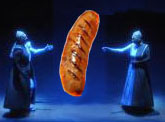
Dining while attending the opera in downtown has never been easy - until now. Sunday night was the first of our three Die Walkuere performances, and the first time during the Ring that food mattered (Rheingold is a scant 2 1/2 hours; Die Walkuere runs twice that). And lo and behold, there was food. Even tables at which to sit with said food. On the Grand Street side of the Dorothy Chandler Pavilion there was, I kid you not, a German Biergarten, complete with a large number of long picnic tables where one could sit alongside strangers and dine on pre- or mid-performance bratwurst. If you've done any travel in Germany, you know how common this seating system is.
If you're feeling upscale, you can reserve a terrific meal during the first intermission (a blessed 45 minute break) and dessert during the second (25 minutes). It's so elegant and civilized that you wish this was the norm, not the exception.
You also have a box meal option during the run of the Ring. Again, you need to reserve in advance. All the info is on the Los Angeles Opera Ring dining page.
It's all so much better than stuffing one's pockets with a half dozen power bars.
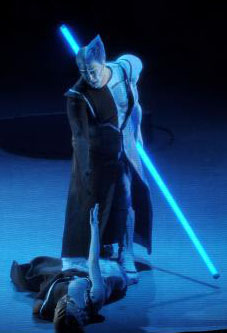
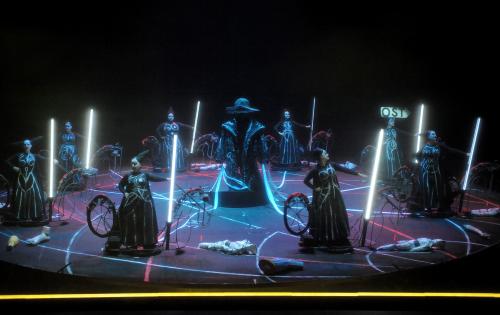 Oh yes: there was music too. And visuals. It's been a year since we've been able to see Los Angeles Opera's Die Walkuere and it has changed: a little here, a bit more there. And, as was the case with Rheingold the night before, seeing these productions with knowledge of what is to come only cements one's opinion of Achim Freyer's vision, for better or wose, happily, mostly for better. The sudden, exclamatory opening of Act III's Ride of the Valkyries was so viscerally powerful that one could hear a momentary hall-wide gasp of astonishment. Sure, one also hears quibbles about the director's abstract, sometimes whimsical concept, but the cohesiveness of his vision and his ultimate faithfulness to the vast majority of the composer's stage directions is increasingly plain to see. You may not like blue flourescent Nothungs, but at least Siegmund first finds that mighty sword stuck in something or other and, at the right moment, the guy actually pulls that sword out of that something or other.
Oh yes: there was music too. And visuals. It's been a year since we've been able to see Los Angeles Opera's Die Walkuere and it has changed: a little here, a bit more there. And, as was the case with Rheingold the night before, seeing these productions with knowledge of what is to come only cements one's opinion of Achim Freyer's vision, for better or wose, happily, mostly for better. The sudden, exclamatory opening of Act III's Ride of the Valkyries was so viscerally powerful that one could hear a momentary hall-wide gasp of astonishment. Sure, one also hears quibbles about the director's abstract, sometimes whimsical concept, but the cohesiveness of his vision and his ultimate faithfulness to the vast majority of the composer's stage directions is increasingly plain to see. You may not like blue flourescent Nothungs, but at least Siegmund first finds that mighty sword stuck in something or other and, at the right moment, the guy actually pulls that sword out of that something or other.
Speaking of the Benjamin Button of Opera: Placido Domingo's Siegmund was — Surprise! — the highlight of the performance. How a man of 69 who, only 13 weeks ago, could undergo surgery for removal of a cancerous polyp from his colon, and then sing one of opera's most daunting roles is a mystery I'll just leave to Domingo, his maker and the inevitable wretched oil portrait in his attic.
- Rich Capparela
(By the way, if you are attending this coming Thursday's Siegfried, here's a reminder that I'll be moderating post-performance discussions after all three Siegfrieds in the 2nd level Grand Hall. Hope to see you - and hear from you - then).
9. You Wanna Talk? It's the Middle of the Night! — 6/4/2010
Thursday was the first our three Siegfrieds. That also meant that it was the first of my three Talk Back post-performance sessions. As was the case in the test run following the final standalone Twilight of the Gods back in April, this was a chance for audience members to vent: ask questions, complain, praise a  particular singer, whatever. What was different about this session from the first was the clock. The applause following Siegfried ended at about 11:15 PM. That's kinda late to start discussing one's feelings, but that's how it worked out. As the third act started wrapping up I began thinking "Who's got any juice left in them for a Q &A? I'll be happy if ten people show."
particular singer, whatever. What was different about this session from the first was the clock. The applause following Siegfried ended at about 11:15 PM. That's kinda late to start discussing one's feelings, but that's how it worked out. As the third act started wrapping up I began thinking "Who's got any juice left in them for a Q &A? I'll be happy if ten people show."
Did anyone stop by? This is Wagner's Ring, we're talking about. What do you think?
As it turned out, I was off by a factor of ten or more. Well over a hundred people stood or sat for what turned out to be a full forty-five minute (!!) session, featuring the same wide-ranging set of opinions that characterized the first Talk Back. Even after the house crew gave me the "wrap it up, champ" signal from the back of the Grand Hall, people came up and wanted to continue the discussion. This Talk Back concept is brilliant therapy for the audience. It allows absolutely contradictory opinions to coexist peacefully. My job is let the opposites connect and talk it through. Because this is an opera audience, no actual blood was shed. Instead, people expressed measured, thoughtful opinions. Ah, if only Congress could have this much class.
The first comment/question came from a woman who complained bitterly that Achim Freyer's clownish costuming and physical distance between Siegfried and Brunnhilde resulted in a total lack of sexual energy between the two. The microphone then passed to a gentleman who countered that the costumes, the Styrofoam muscle shirt for Siegfried and the dramatic color change in Siegfried's wardrobe after meeting Brunnhilde made for the sexiest Act III he'd ever seen. It was like that.
As the session went on, and midnight approached, people started peeling off, but there were still a couple of dozen hearty Wagnerians there when I had to say "Good night. Drive safely. See you again at the end of the world."
I'll be doing my next cheap Oprah imitation at the conclusion of the next Siegfried, on Sunday, June 13. ("Look under your seat. YOU get a tarnhelm and YOU get a tarnhelm and YOU get a tarnhelm...").
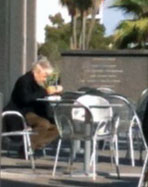
A word about the orchestra last night. The brass section especially acquitted itself admirably. And if there's one particular Ring opera where you want the brass to be reliable, it's Siegfried. I do wish that the Dorothy Chandler Pavilion were not so dry an acoustic space. Still, that steeply raked stage does wonders for the vocalists' ability to project to the back row. The result is a Ring where the balance between orchestra and singers is doggone close to perfect. How often does that happen?
Finally, in the department of celebrity spotting: in addition to the usual Hollywood contingent last night (Tarantino, anyone? Buck Henry?), there was a great moment when my wife and I were having an out-of-doors pre-performance salad and brat wurst dinner near the Mark Taper Forum. A few tables away, all by himself, no fawning entourage in sight, dining on fast food and taking in the scene, sat director Achim Freyer himself. I was courteous enough to refrain from interrupting his meal with an inane "Hiya. How's it goin'?" but not discrete enough to resist snapping his photograph on my iPhone.
10. World Ends (Film at 11) — 6/6/2010
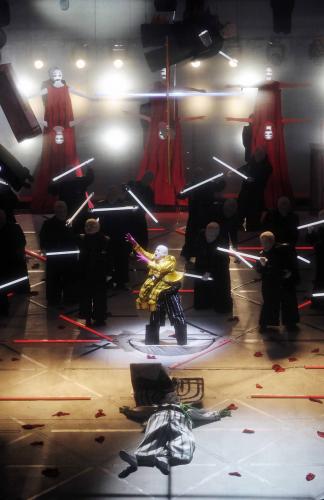 Sunday night at 11 pm the world ended - again. This time it marked the conclusion of the first complete Los Angeles Ring. There are still two more trips down the Rhine within the walls of the Dorothy Chandler Pavilion and they are not to be missed. Sunday night everything finally came together for Los Angeles Opera's "Der Ring des Nibelungen" (in spite of a snake bitten history including but not limited to: U.S. economic meltdowns; global economic meltdowns; Icelandic volcanic ash; a plunging Euro; an initially mixed reaction to the Achim Freyer production design; anti-Wagner protests; publicly squabbling singers; a massive operating budget shortfall and even, for God's sake, competition with Lakers playoff games). Talk about a cursed ring.
Sunday night at 11 pm the world ended - again. This time it marked the conclusion of the first complete Los Angeles Ring. There are still two more trips down the Rhine within the walls of the Dorothy Chandler Pavilion and they are not to be missed. Sunday night everything finally came together for Los Angeles Opera's "Der Ring des Nibelungen" (in spite of a snake bitten history including but not limited to: U.S. economic meltdowns; global economic meltdowns; Icelandic volcanic ash; a plunging Euro; an initially mixed reaction to the Achim Freyer production design; anti-Wagner protests; publicly squabbling singers; a massive operating budget shortfall and even, for God's sake, competition with Lakers playoff games). Talk about a cursed ring.
And yet.
Redemption was in abundance Sunday night. When Achim Freyer walked onto the stage at the conclusion of the performance many of us braced ourselves. Would we hear another cacophonous outpouring of boos and catcalls as had been the case following the debut of Twilight of the Gods?
No. This time a couple of naysayers managed to get in a briefly audible cry of disapproval upon seeing Mr. Freyer's form join the cast on stage, but they were immediately and decisively drowned out by a rapturous round of cheers.
Mr. Freyer's form join the cast on stage, but they were immediately and decisively drowned out by a rapturous round of cheers.
What a difference a few weeks can make. This was the same production, same singers, same hall, same orchestra. This time the audience was, for lack of a better word, pre-selected. Those in attendance knew what they were getting into, and they liked what they saw and what they heard. Those who did not embrace Freyer's vision were at home watching their DVD of the Metropolitan Opera Otto Schenk Ring. Or the Lakers.
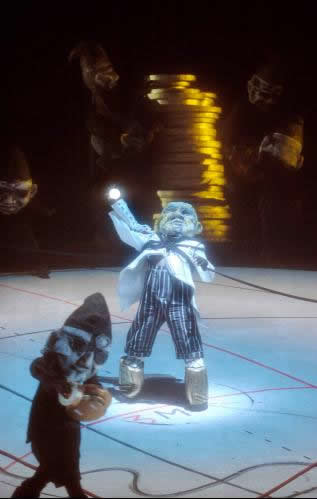 The Ring makes demands upon the listener and this is a production that doesn't make it a walk in the park. Freyer obviously hopes that you know the story well enough so that you can pick up on a few of the references he tosses in at breakneck pace. For the newcomer, the riches of this production may well become clear only in retrospect. That does not by any stretch mean that those unfamiliar with the Wagner's epic should avoid this particular Ring. Quite the contrary. Jump in. Let the music wash over you, let the composer's metaphors stimulate you, let Freyer's colorful, whimsical, thoughtful, provocative vision dazzle you and confound you. Days, weeks, months or even years from you'll find yourself having one of those "Holy crap! Now I get it" moments.
The Ring makes demands upon the listener and this is a production that doesn't make it a walk in the park. Freyer obviously hopes that you know the story well enough so that you can pick up on a few of the references he tosses in at breakneck pace. For the newcomer, the riches of this production may well become clear only in retrospect. That does not by any stretch mean that those unfamiliar with the Wagner's epic should avoid this particular Ring. Quite the contrary. Jump in. Let the music wash over you, let the composer's metaphors stimulate you, let Freyer's colorful, whimsical, thoughtful, provocative vision dazzle you and confound you. Days, weeks, months or even years from you'll find yourself having one of those "Holy crap! Now I get it" moments.
As someone who has spent all of his adult life immersed in this music, I urge you to take a chance. Do not miss this relevant, and yes, faithful Ring. The water's fine, even if that water does contain babies with removable heads, mini-dragons, Harpo Marx super heros, bobble head dwarfs, death Goddesses on bicycles, gold-plated top hats & the goofiest airplane ever to appear in opera.
In the words of Wotan to Hunding - Geh'! Geh'!
- Rich Capparela
11. The Greatest Ring You'll Never See — 6/14/2010
Sunday's matinee was the second of three performances of Siegfried. It was also the second of three Talk Back sessions following the curtain calls. Big crowd for this one and it lasted a full 50 minutes. One thing that came up during the course of the spirited discussion was the usual: does Achim Freyer's production detract or add to the experience of Wagner's creation? And it reminded me of a different, thoroughly amazing Ring I remember first seeing many years back.
Let me give you just one example of how awesome this production is:
 When Fafner the dragon appears in Siegfried, the entire stage shakes with each footfall of the enormous creature. You can actually feel the heat of his fetid breath from your seat. When Siegfried stabs him, Fafner's blood pours out both red and frothy white, steaming in the cool forest air. As the dragon's blood comes in contact with Siegfried's hand it bubbles furiously and Siegfried nearly jumps out of his skin at the shock and acute pain. As he instinctively puts his hand to his lips, accidently tasting the dragon's blood that will allow him to understand the songs of the birds, the lighting shifts from bleak gray to a warm glowing summer's yellow. Above his head there appear vague fluttering figures - birds that were always there but that he is aware of only now.
When Fafner the dragon appears in Siegfried, the entire stage shakes with each footfall of the enormous creature. You can actually feel the heat of his fetid breath from your seat. When Siegfried stabs him, Fafner's blood pours out both red and frothy white, steaming in the cool forest air. As the dragon's blood comes in contact with Siegfried's hand it bubbles furiously and Siegfried nearly jumps out of his skin at the shock and acute pain. As he instinctively puts his hand to his lips, accidently tasting the dragon's blood that will allow him to understand the songs of the birds, the lighting shifts from bleak gray to a warm glowing summer's yellow. Above his head there appear vague fluttering figures - birds that were always there but that he is aware of only now.
Here's another memorable moment:
At the end of Das Rheingold the gods cross over a colossal bridge of brilliant, shimmering rainbow colors; the bridge spans several miles into the far distance, eventually reaching up and up into and through puffy cumulus clouds; on the other side of the bridge stands Valhalla - distant and regal, bathed in late afternoon sun; far beneath is the  river Rhine and near the closest shore swim the three Rhine Maidens, at once both seductive and plaintive as they float languidly on the undulating water's surface. And they are, every one of them, beautiful beyond description. True sirens. The last triumphant chord of the score is punctuated by an ever increasing white light, a light that is blinding by the end. One must avert one's eyes. It's that bright. And then complete darkness.
river Rhine and near the closest shore swim the three Rhine Maidens, at once both seductive and plaintive as they float languidly on the undulating water's surface. And they are, every one of them, beautiful beyond description. True sirens. The last triumphant chord of the score is punctuated by an ever increasing white light, a light that is blinding by the end. One must avert one's eyes. It's that bright. And then complete darkness.
Yep. It's quite the production. And it's one you'll never see. Why? Because it's the vision I created in my young head more than 40 years ago while listening to this music, without the benefit of any external visual cues. Coming from a generation that grew up before the DVD or even VHS (ask Gram and Gramps), I first encountered this music as just that. Music. The staging was left for me to fill in. And fill it in I did. And if you are of a certain age, so did you. Thus we are doomed to a lifetime of disappointment, for how can any director in any opera company possibly compete with the perfection we conjure in our imagination?
Later generations come to opera having first heard this music with all the visuals set out for them. The production may be avant garde, it may be traditional, maybe it's something in between. But it creates a first impression that preempts the imaginary production we'd otherwise be forced to create for ourselves.
Those of us who have traveled far and wide to see and hear Wagner's Ring do so with the unspoken hope that, maybe this time we'll finally get to witness the production that matches our expectations. And it never comes, does it? I believe that is partly why all visually challenging productions - Achim Freyer's included - come in for so much criticism: the further away a given director travels from the predictable, the more she or he is going to anger those with pre-conceived notions. After all, the imagination is as about as unique an attribute as is possible in our species.
The person raised on video will experience this music in a more external fashion, creating a comparative library of impressions, something less personal but far more practical in the real world of theater-going.
So who is richer and who is poorer in this scenario? I don't have the answer, but I can tell you this: give me a budget of six to ten billion dollars and ten years and I'll show you mine. Until then, I for one am grateful that someone with imagination is having his vision presented, even if it doesn't match the one knocking around in my head.
- Rich Capparela
12. Th' th' That's All, Folks! — 6/28/2010
In Los Angeles, on Saturday evening, June 26 at approximately 11 PM, the world ended again, this time for good.
The L.A. Ring is now history. Director Achim Freyer's staging, so controversial over the past two years, was given a solidly rapturous seal of approval by the audience as Freyer himself appeared on stage, some 10 minutes into the applause. This time no boos could be heard over the cheering. Having witnessed the final act of Twilight of the Gods in this production on some five occasions, it no longer stuns me as it did upon seeing it the first time. Instead, I found myself on Saturday night trying to catch all of the stagecraft. Didn't happen. I still missed how and when the dead Gunther vanishes from the front of the stage. I still couldn't tell the difference between live performers and mannequins floating in the air. And on and on. 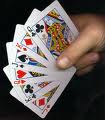
The Freyer production is like a night at the Magic Castle. You can sit there, just a few feet away from the performer and that deck of cards and yet have no clue as to how and what just happened. That is theater magic and that is the legacy of the Achim Freyer Ring. Yes, it was busy to a fault. Yes the Siegfried was a buffoon, not Conan the Barbarian. Yes the dragon was just shy of four feet tall. And yes, there were objects and characters throughout that still make no obvious sense to everyone.
But it was all of a piece. Thoughtful, illuminating, provocative. And exquisitely performed by singers, orchestra and stage crew alike. The orchestra especially grew into its role. By Saturday night, like the audience, the orchestra had grown accustomed to the pace and duration requirements of Wagner's creation. And aside from a couple of minor stage mishaps in the final scene, it all came together with a passion and cohesiveness only hinted at earlier.
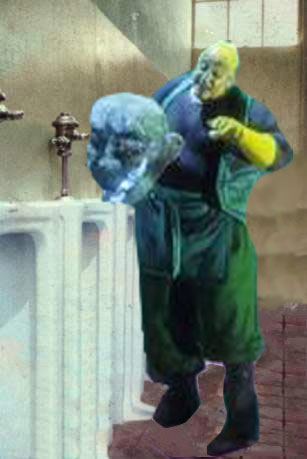 Just before the performance began I visited the downstairs men's room and found myself standing next to a bearded gentleman with a beatific smile. I decided to practice impolitic stall behavior and said to him "On behalf of many of us who waited a long time for this, I would like to thank you helping Los Angeles Opera come of age, Mr. Freyer." He grinned, thanked me, finished his business and left the urinal. The guy on my left asked "Was that...?" "Yup," I replied "Using the public bathroom even though he has access to more private spaces. The guy is a mensch."
Just before the performance began I visited the downstairs men's room and found myself standing next to a bearded gentleman with a beatific smile. I decided to practice impolitic stall behavior and said to him "On behalf of many of us who waited a long time for this, I would like to thank you helping Los Angeles Opera come of age, Mr. Freyer." He grinned, thanked me, finished his business and left the urinal. The guy on my left asked "Was that...?" "Yup," I replied "Using the public bathroom even though he has access to more private spaces. The guy is a mensch."
Also ending is the citywide Ring Festival. Later this week there will be a wrap party for all 100+ participating arts organizations. I'll give you a report on that event as the final blog in this series.
By the way, at the third and final Siegfried performance on Wednesday the 23rd (a weeknight performance that ended after 11 PM) we had the biggest crowd yet for the Talk Back sessions hosted by yours truly. As had become the norm, we were still going strong at midnight when the house crew gave me the "For God's sake, man, wrap it up!" sign at midnight. Fielding questions and moderating some pretty passionate opinions will be one of my fondest memories of this Ring experience. Thanks to all who attended and thanks to the opera company for entrusting me with its patrons.
- Rich Capparela
13. And So it Begins — 7/1/2010
We now come to the final installment of "Der Blog des Nibelungen." On April 15th of this year, the date this series started, I got zero Google hits on the text string of "Der Blog des Nibelungen." Today there were 930. Not bad for a blog that had its home page at kusc.org completely changed about two weeks into the series, creating a huge bunch of dead end links. (By the way, I've also posted all of these blogs - less the reader comments - on my own web site at cardiffstudios.com).
And so it begins, indeed. In the final moments of Wagner's Ring, the composer restates a theme first heard at the very start of the first installment, Das Rheingold. It's the opening song of the Rheinmaidens. Wagner recycles, develops, inverts and combines just about every other theme throughout his massive work, but not this Rheinmaiden song. It remains pure and unsullied by events. So when at long last it does return at the Ring's close, we know with absolute certainty that all is as it once was. The circle has closed. The cycle is complete. It all begins anew.
And, wouldn't you know, as the end of Los Angeles' Ring experience arrives, so too does the promise of a new start.
In a comment on my previous installment
(6/28 "Th' th' That's All, Folks!") a reader named Russell wrote "I take it from the end of Conlon’s lecture (see you in 5 years) that the next LA Ring will be in 5 years. Is that true? Seems a long time to wait." 
 Not having attended the conductor's final pre-opera lecture that Saturday evening, I had not heard this bombshell. The opportunity to get the inside scoop presented itself Wednesday night at the Getty Center. The Valhalla-like location was the scene of a wrap party for the 122 organizations that participated in the citywide Ring Festival L.A. In attendance were such notables as the Ring Festival's tireless leader Barry Sanders, L.A. County Third District Supervisor Zev Yaroslavsky and the Music Center's CEO Stephen Rountree. And it was Rountree who, in his remarks to the crowd of over 200, took note of Conlon's promise. With refreshing candor he expressed some doubt about the veracity of Conlon's 5-year plan. And then he told us "Seven years." The crowd went wild.
Not having attended the conductor's final pre-opera lecture that Saturday evening, I had not heard this bombshell. The opportunity to get the inside scoop presented itself Wednesday night at the Getty Center. The Valhalla-like location was the scene of a wrap party for the 122 organizations that participated in the citywide Ring Festival L.A. In attendance were such notables as the Ring Festival's tireless leader Barry Sanders, L.A. County Third District Supervisor Zev Yaroslavsky and the Music Center's CEO Stephen Rountree. And it was Rountree who, in his remarks to the crowd of over 200, took note of Conlon's promise. With refreshing candor he expressed some doubt about the veracity of Conlon's 5-year plan. And then he told us "Seven years." The crowd went wild.
Yes, that's right, folks. The stage isn't yet fully struck and Los Angeles Opera is already talking about bringing back the Achim Freyer Ring. It almost provided a cure for the post-Ring depression many are feeling right about now.
However. I don't know much about economics, but I do subscribe to the conventional wisdom that the economy works in seven year up-and-down cycles. So here's my final two cents to Los Angeles Opera: make that five years, or six years or eight years, but avoid the seventh year, okay?
 Stehpen Rountree also said something that resonated deeply in that crowd of professionals representing a wildly diverse set of disciplines, from Griffith Observatory to the Latino Museum and the the Goethe Institute to Descanso Gardens:
Stehpen Rountree also said something that resonated deeply in that crowd of professionals representing a wildly diverse set of disciplines, from Griffith Observatory to the Latino Museum and the the Goethe Institute to Descanso Gardens:
"The legacy of Ring Festival L.A. are the partnerships that were created and that will continue to provide collaborative arts and educational programming across Los Angeles."
Amen to that. That was the unexpected side benefit of L.A.'s home-grown Ring. It brought many of us together for the first time. And for a golden, precious moment Los Angeles wasn't a sprawling metropolis at all; instead it became something of a small town, showing civic pride and a irrepressible can-do spirit. It made one proud to be an Angeleno. Let's do it again in (?) years.
So that'll do it for this series of blogs (though I encourage you to leave a comment or question - I'll be more than happy to reply). And if you too are feeling a bit of a letdown as the Ring becomes a memory, here are a couple of tips for things to do: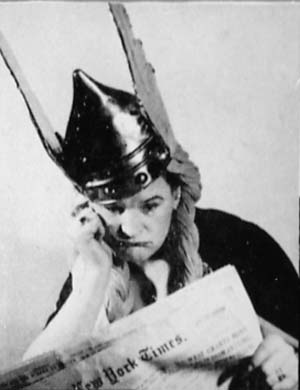
The Griffith is continuing its Light of the Valkries laser show for the rest of the year. I've spoken to several people who's opinions I respect and they say it's terrific. I'm heading there myself sometime in the next few weeks. There are also ongoing art shows worth checking out, including exhibits presented by the California Art Club. And of course there's comedienne Anna Russell, whose 30 minute synopsis of the Ring is one of the funniest bits of classical music humor every recorded. A video of her send-up is even available on YouTube.
And after all, it was Anna Russell who pointed out that Siegfried falls in love with Gutrune Gibich "...the first woman that Siegfried has ever met who is not his aunt."
Hojotoho,
- Rich Capparela
